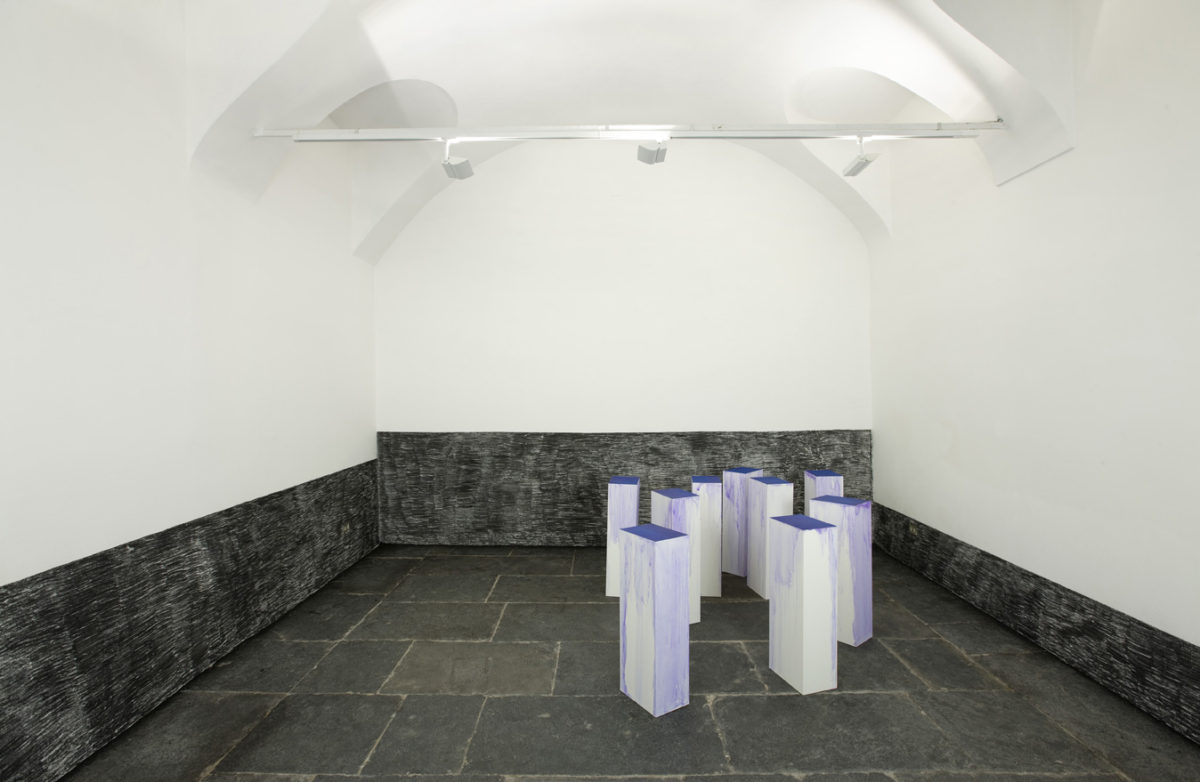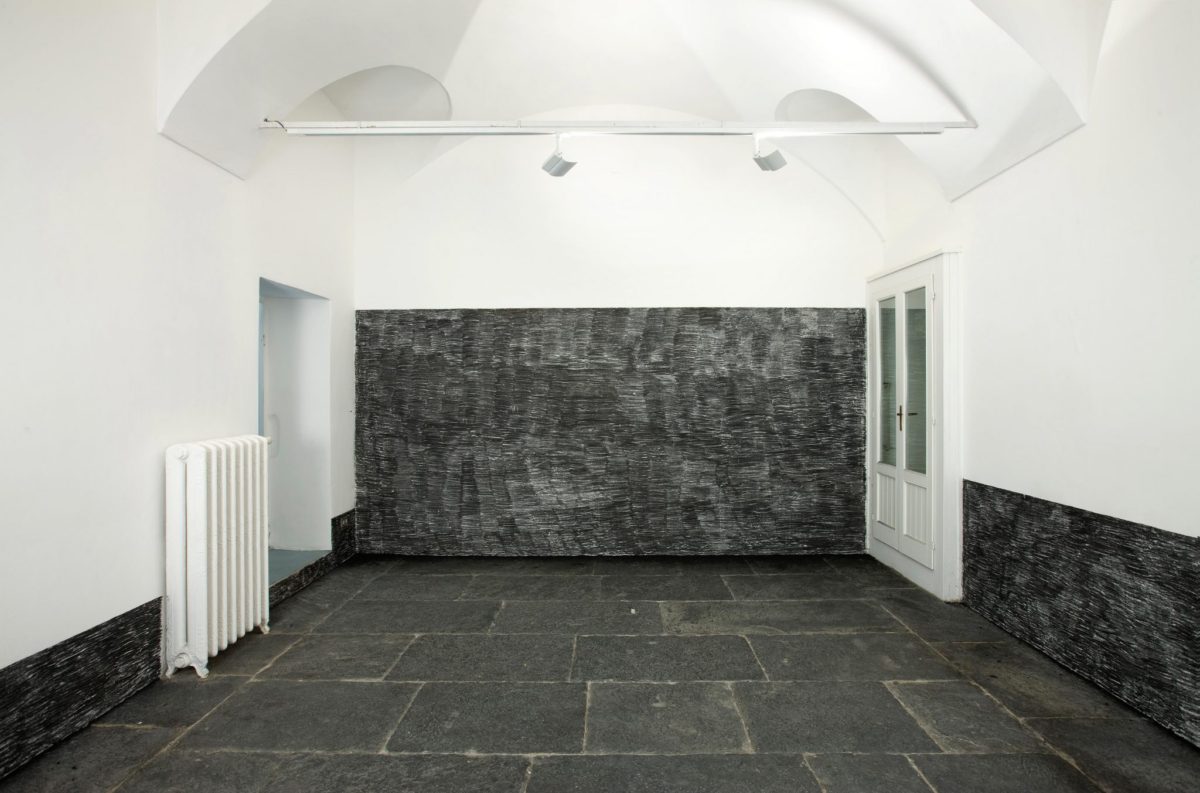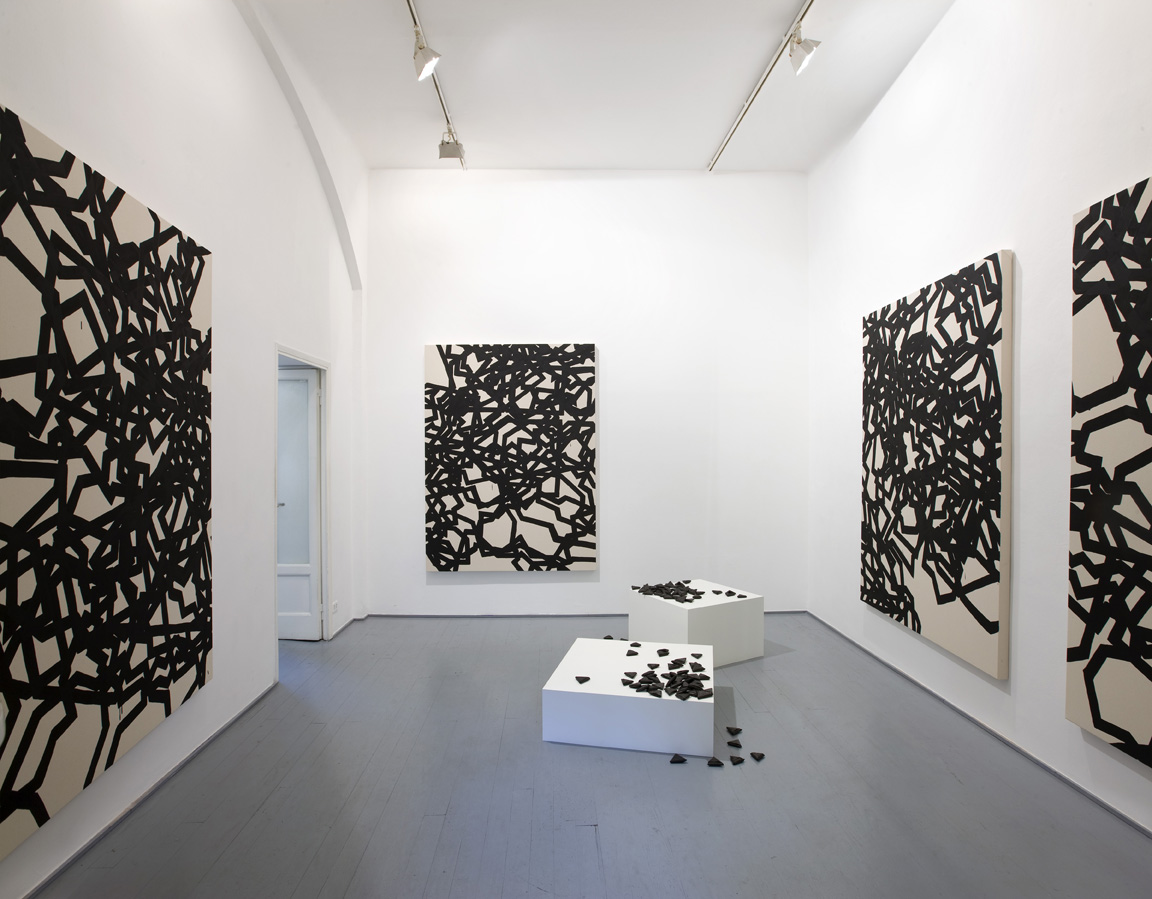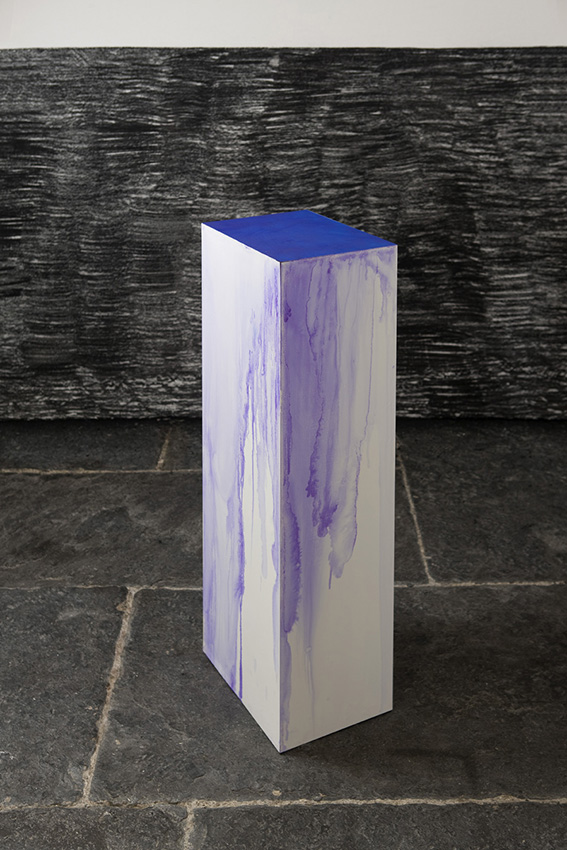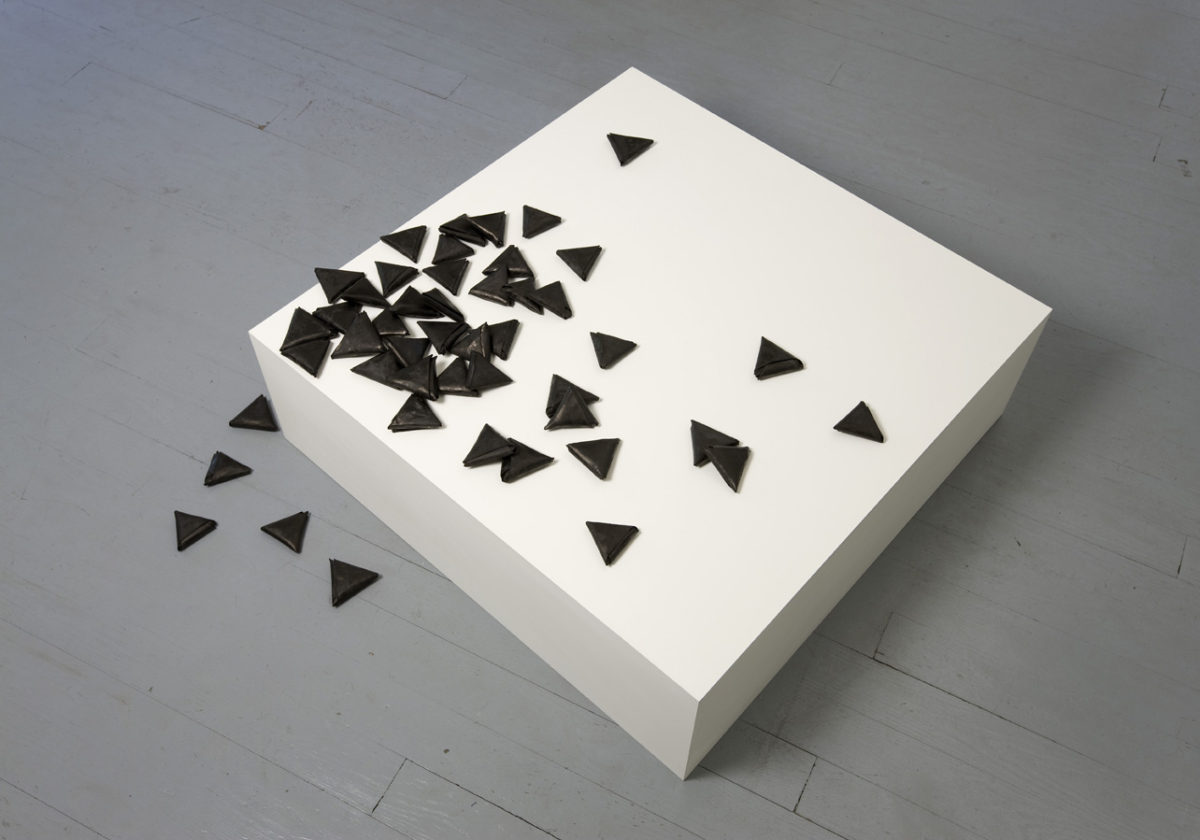
- This event has passed.
francesca kaufmann is happy to announce Latifa Echakhch’s first solo show in Italy, opening September 18th, in occasion of START 2009.
The work of Latifa Echakhch is based on the deconstruction and representation of identity and cultural symbols. In her multimedia practice, including installation, sculpture, video, interventions and actions, the artist decontextualizes objects loaded with cultural and political saliency and repositions them within a minimalist language: cheap oriental prayer carpets rendered as empty frames, commercial replicas of fine Moroccan tea glassware smashed into a mass of silent violence, flagpoles mounted without their flags. In this dialectical approach, the ghostly echo of the removed object is in fact amplified, revealing post-colonial contradictions and norms.
For her first solo show at francesca kaufmann, Echakhch will present a number of new works, including four new paintings related to her ongoing series, “Dérives”. Like the earlier wall and floor drawings from the series, the paintings use ornament motifs of Islamic architecture: a drawn line derived from the form of a star, suggesting both an infinite path, but also, as implied by the title, a Situationist “psycho-geographical drift.” According to the artist, “by a process of wandering, I thus revisit this drawing technique, a bit like a bad student: the geometry becomes chaotic, the symmetry is undermined, and the absolute is therefore impossible.”
In Les Petites Lettres [The small letters] (2009), sheets of paper are folded into triangular forms and then dyed black with Chinese ink. The object’s form resembles Breouatte, a popular pastry consumed and prepared in Moroccan homes. Echakhch introduces a semantic inversion in the title of the work, as the Arabic word Breouatte in French translates to petites letters. Like in Dérives, Les Petites Lettres, reformulates and recontextualizes a cultural object, shifting the meaning of these objects as well as their symbolic value.
In the second space of the gallery Echakhch presents four charcoal wall drawing, Plainte 86, 43, 113, 226 (2009) Each of the four Plaintes, a double entendre in French meaning both plinth and sorrow, delineate Le Corbusier’s ideal measurement for the positions of leaning, sitting, the resting the elbows and, lastly the ideal height of a ceiling. Le Corbusier’s rigorous rational order of space is overturned by Echakhch’s intervention that presents instead its ironic eulogy to a Modernist past.
In A chaque stencil une révolution, une apres l’autre [For each stencil, a revolution, one after another] (2009) Echakhch elaborates an earlier work of the same title, taken from a quote by Yasser Arafat in describing the human rights struggles of the late 1960’s. Each of the nine pedestals holds a sheet of carbon paper, on which the artist pours alcohol. In this performative gesture the paper is emptied of its rhetorical power, leaving each “stencil” to stand as an eerie monument to revolutions failed.
francesca kaufmann è felice di annunciare la prima mostra personale di Latifa Echakhch in Italia. La mostra inaugurerà il 18 settembre in occasione di START 2009.
Il lavoro di Latifa Echakhch esplora e decostruisce i confini ambigui dell’identità culturale. Usando tecniche diverse – fra cui installazioni, scultura, video, interventi e azioni – l’artista sradica dal loro contesto oggetti carichi di significati politici e culturali per riposizionarli attraverso un linguaggio minimalista. Tappeti da preghiera a buon mercato sono trasformati in contorni vuoti, repliche commerciali di bicchieri da tè marocchini vengono ridotti in una massa informe di muta violenza, i pennoni che ornano gli edifici pubblici vengono montati senza bandiere. In questo approccio dialettico, che carica l’arte di un valore liminare, l’eco fantasmatica dell’oggetto rimosso è di fatto amplificata, rivelando così contraddizioni e norme postcoloniali.
Per la sua mostra personale da francesca kaufmann, Echakhch presenterà un gruppo nuovi lavori, tra cui una serie di dipinti intitolata Dérives. I quadri usano motivi ornamentali tratti dall’architettura sacra islamica, insiemi di linee che derivano dalla forma di una stella, per suggerire simultaneamente una strada verso l’infinito e – come implicato dal titolo – una “deriva psicogeografica” di stampo situazionista. Come sostiene l’artista, “tramite un processo di divagazione, sto rivisitando questa tecnica pittorica come una scolara distratta: la geometria diventa caotica e distorce la simmetria, rendendo l’assoluto impossibile.”
In Les petites lettres (2009), l’artista piega dei fogli di carta per ottenere la forma di triangolo, poi tinto di inchiostro nero. La forma di questi oggetti ricorda la bréouatte, un dolce tipico della cultura tradizionale marocchina. Fin dal titolo, Echakhch disloca il valore semantico dell’oggetto a cui si ispira: la parola “bréouatte”, infatti, si traduce in francese “petites lettres”, “piccole lettere”. Come la serie Dérives, Les petites lettres riformula un dato culturale ponendolo in un contesto estraneo, facendone scivolare il significato e nello stesso tempo caricandolo di valori simbolici nuovi.
Nella seconda parte della galleria Echakhch presenta quattro disegni murali al carboncino, Plainte 86, 43, 113, 226 (2009). Ognuna delle quattro Plaintes – parola che pronunciata in francese significa sia “plinto” che “lamento” – indica rispettivamente l’altezza ideale di un uomo che si china, si siede, riposa il gomito e alza un braccio per toccare il soffitto, secondo le teorie esposte nel Modulor di Le Corbusier. Il rigoroso ordine spaziale formulato dall’architetto svizzero viene rovesciato dall’intervento di Echakhch, che si presenta come un elogio funebre stranito delle avanguardie novecentesche.
In A chaque stencil une révolution, une apres l’autre (2009), Echakhch rielabora un suo precedente lavoro dallo stesso titolo, tratto da una frase di Yasser Arafat che descrive le lotte per i diritti umani della fine degli anni sessanta. I nove piedistalli che compongono il lavoro sono ognuno sormontato da un foglio di carta carbone blu su cui l’artista ha rovesciato dell’alcool. In questo gesto dal forte valore performativo la carta viene svuotata del suo potere retorico, erigendo un monumento bizzarro alla memoria delle rivoluzioni fallite.

